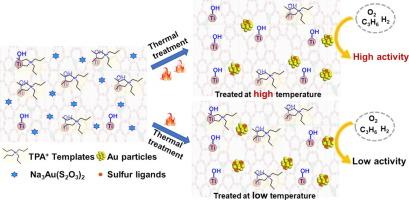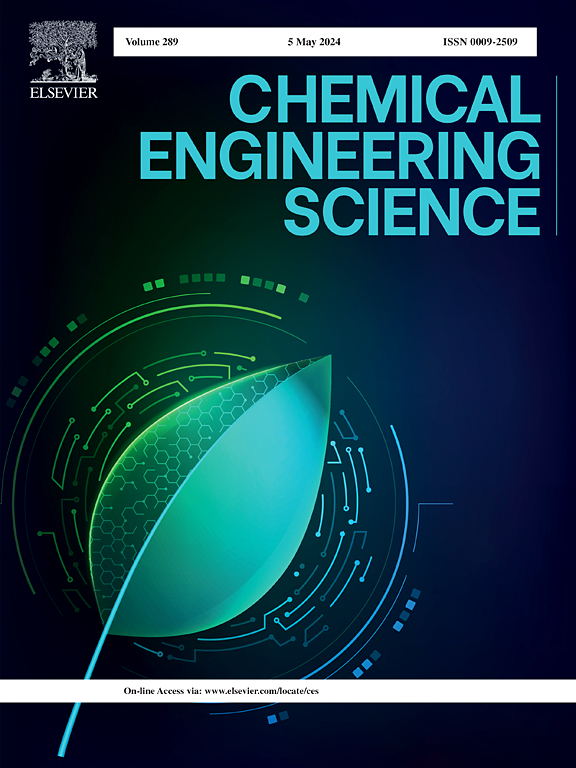Modified impregnation combined with thermal treatment to boost Au-Ti catalytic hydro-oxidation of propylene
IF 4.1
2区 工程技术
Q2 ENGINEERING, CHEMICAL
引用次数: 0
Abstract
Designing highly efficient Au-Ti bifunctional catalysts is pivotal to the hydro-oxidation of propylene to propylene oxide (PO). Herein, we report that the catalytic performance of Au/uncalcined TS-1 (i.e., TS-1-B) catalyst prepared via impregnation method using Na3Au(S2O3)2 as precursor can be remarkably enhanced by tuning the properties of active sites through thermal treatment. Increasing thermal treatment temperature favors the decomposition of sulfur species adsorbed on the surface of Au nanoparticles and the TPA+ templates adsorbed on the external surface of the catalyst, thereby exposing more Au and Ti sites, while the dispersion of Au particles and surface hydrophobicity are inferior at elevated thermal treatment temperature. Consequently, PO formation rate exhibits a volcano-shaped relationship with thermal treatment temperature. Importantly, the as-obtained 0.035 wt% Au/TS-1-B catalyst displays a hydrogen efficiency of up 62 % in addition to promising PO selectivity (95 %) and PO formation rate (155 gPO·h−1·kgcat-1) with no significant decline over 140 h.

改性浸渍结合热处理促进Au-Ti催化丙烯加氢氧化
设计高效的Au-Ti双功能催化剂是丙烯加氢氧化制环氧丙烷的关键。本文报道了以Na3Au(S2O3)2为前驱体通过浸渍法制备的Au/未煅烧TS-1(即TS-1- b)催化剂,通过热处理调整活性位点的性质,可以显著提高其催化性能。提高热处理温度有利于吸附在Au纳米颗粒表面的硫种和吸附在催化剂外表面的TPA+模板的分解,从而暴露出更多的Au和Ti位,而提高热处理温度则使Au颗粒的分散性和表面疏水性较差。因此,PO形成速率与热处理温度呈火山状关系。重要的是,得到的0.035 wt% Au/TS-1-B催化剂的氢效率高达62 %,PO选择性为95 %,PO形成率为155 gPO·h−1·kgcat-1,在140 h以上没有显著下降。
本文章由计算机程序翻译,如有差异,请以英文原文为准。
求助全文
约1分钟内获得全文
求助全文
来源期刊

Chemical Engineering Science
工程技术-工程:化工
CiteScore
7.50
自引率
8.50%
发文量
1025
审稿时长
50 days
期刊介绍:
Chemical engineering enables the transformation of natural resources and energy into useful products for society. It draws on and applies natural sciences, mathematics and economics, and has developed fundamental engineering science that underpins the discipline.
Chemical Engineering Science (CES) has been publishing papers on the fundamentals of chemical engineering since 1951. CES is the platform where the most significant advances in the discipline have ever since been published. Chemical Engineering Science has accompanied and sustained chemical engineering through its development into the vibrant and broad scientific discipline it is today.
 求助内容:
求助内容: 应助结果提醒方式:
应助结果提醒方式:


